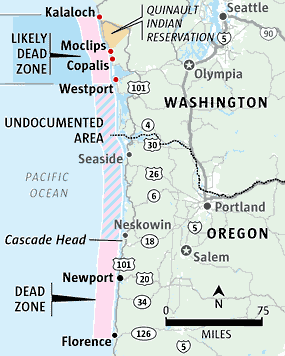A new study looks at the history of climate and its relation to the spread of bubonic plague.
Pandemics of bubonic plague have occurred in Eurasia since the sixth century ad. Climatic variations in Central Asia affect the population size and activity of the plague bacterium’s reservoir rodent species, influencing the probability of human infection. Using innovative time-series analysis of surrogate climate records spanning 1,500 years, a study in BMC Biology concludes that climatic fluctuations may have influenced these pandemics. This has potential implications for health risks from future climate change.
The plague has been at the heart of many historians theories about how some of the largest changes in European and Asian history have gone down.
Did the Justinian Plague contribute to the terminal weakening of the eastern Roman Empire [2]?
Did the Black Death hasten the collapse of Europe’s feudal system, and the advent of liberalizing moves towards mercantilism, literacy and the Renaissance [3]?
(And was the rise and fall of the Mongol-controlled Yuan Dynasty in China, from the mid-12th to mid-13th centuries, influenced by flickering pre-pandemic plague epidemics in China during that Medieval Warm period?)
Turns out that there’s a growing batch of evidence showing a connection between fluctuations in climate, and incidence of plague. See the figure:
Here’s their description of the graph:
Modeling the effects of climate on plague. In the top plot, the solid black line represents plague activity in the central Asian rodent population (Y(mean)) over the past 1,500 years, as estimated from the authors’ model of the effects of climate (including via observably correlated vegetation indices) on this natural reservoir (sylvatic) plague activity. The broken gray lines show 95% quantiles and the red line represents the multi-frequency (2 to 60 years) Gaussian moving average. The dark-blue plot represents the long-term (2 to 400 years) multi-frequency mean, with the maximum (upper broken line, Y(max)), minimum (lower broken line, Y(min)) and sum of minimum and maximum (solid line, Y(qu.)). The periods leading up to the Justinian Plague (1), the Black Death (2), the 19th-century pandemic (3) and the Manchurian epidemics (4) are shaded in pale blue. The third plot shows the index of conflict between Chinese and nomad societies (solid black line, War). Below this are shown the coverage of the climatic data used in the modeling: glacial series (blue), tree-ring index (green), and the decadal coverage in the monsoon proxy (brown). Taken from Figure 3d of Kausrud et al. [1].
This type of study is both kick-ass (because of how interesting it is) and frightening!



.png)




